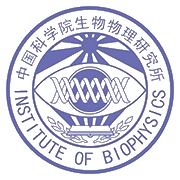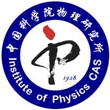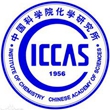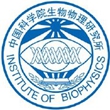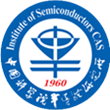Sessions 2:Chemical Sciences
Klaus Müllen

Character introduction
Professional Career
1966–1969 Studies in Chemistry, University of Cologne
1969 Degree in Chemistry (Professor E. Vogel)
1971 PhD-work, University of Basel (Professor F. Gerson)
1972–1978 Postdoctoral training and Habilitation (Professor J.F.M. Oth), ETH Zürich
1979–1984 Professor University of Cologne
1984–1989 Professor University of Mainz
1988 Offer from the University of Göttingen
1989 Scientific Member of the Max-Planck-Society and Director at the Max Planck
Institute for Polymer Research
1992 Offer from the University of Cologne
Awards and Lectureships
1999 Member of the German National Academy of Sciences Leopoldina
2003 Science Award of the Stifterverband
2005 Deutschland in Japan Lectureship Award of the Chemical Society Japan
2006 International Award of the Belgian Polymer Group
2013 Franco-German Award of the Sociéte Chimique de France
Adolf-von-Baeyer-Medal, German Chemical Society
Utz-Hellmuth-Felcht Award of the SGL Group
ChinaNANO Award
Member of the American Academy of Arts & Sciences
2014 Carl Friedrich Gauß-Medal, Braunschweigische Wissenschaftliche Gesellschaft
ACS Nano Lectureship Award
2015 Member of the European Academy of Sciences (EURASC)
2016 Hermann-Staudinger-Award, German Chemical Society
2017 Award of the Academy of Sciences and Humanities in Hamburg
Principal Distinguished Professor, Dongguan University of Technology
2018 IKCOC Prize 2018, The 14th International Kyoto Conference on New Aspects of
Organic Chemistry, November 2018
2019 Karl-Ziegler-Award of the German Chemical Society
Cothenius Medal, German National Academy of Sciences Leopoldina
1966–1969 Studies in Chemistry, University of Cologne
1969 Degree in Chemistry (Professor E. Vogel)
1971 PhD-work, University of Basel (Professor F. Gerson)
1972–1978 Postdoctoral training and Habilitation (Professor J.F.M. Oth), ETH Zürich
1979–1984 Professor University of Cologne
1984–1989 Professor University of Mainz
1988 Offer from the University of Göttingen
1989 Scientific Member of the Max-Planck-Society and Director at the Max Planck
Institute for Polymer Research
1992 Offer from the University of Cologne
Awards and Lectureships
1999 Member of the German National Academy of Sciences Leopoldina
2003 Science Award of the Stifterverband
2005 Deutschland in Japan Lectureship Award of the Chemical Society Japan
2006 International Award of the Belgian Polymer Group
2013 Franco-German Award of the Sociéte Chimique de France
Adolf-von-Baeyer-Medal, German Chemical Society
Utz-Hellmuth-Felcht Award of the SGL Group
ChinaNANO Award
Member of the American Academy of Arts & Sciences
2014 Carl Friedrich Gauß-Medal, Braunschweigische Wissenschaftliche Gesellschaft
ACS Nano Lectureship Award
2015 Member of the European Academy of Sciences (EURASC)
2016 Hermann-Staudinger-Award, German Chemical Society
2017 Award of the Academy of Sciences and Humanities in Hamburg
Principal Distinguished Professor, Dongguan University of Technology
2018 IKCOC Prize 2018, The 14th International Kyoto Conference on New Aspects of
Organic Chemistry, November 2018
2019 Karl-Ziegler-Award of the German Chemical Society
Cothenius Medal, German National Academy of Sciences Leopoldina
Topic: Graphene Nanoribbons – Merging the Worlds of Graphenes and Conjugated Polymers
Abstract Carbon nanostructures, a hot topic of modern material science, are not only a playground for physics and engineering, but also a challenge for chemical synthesis. Especially exciting additions to the rich carbon family are graphenes and graphene nanoribbons (GNRs), their geometrical cutouts. Graphenes hold enormous promise, for example, in energy technologies and non-linear optics. However, before they can be employed in electronics and their high charge-carrier mobility be utilized in field-effect transistors (FETs), an opening of their electronic band gaps must be achieved. The best answer to this longstanding problem are GNRs, and this brings precision polymer synthesis into play. While protocols from lithography or unzipping of carbon nanotubes offer no control over length, width and edge structure, bottom-up synthesis is the method of choice.
Utilizing new protocols of polycyclic aromatic hydrocarbon chemistry, we present unprecedented syntheses proceeding in, both, solution and on-surface. The latter approach, which can be scaled up by extension from UHV-conditions to chemical vapor deposition, also allows in-situ monitoring and proof of GNRformation by scanning tunneling microscopy.
Based on these material breakthroughs, we fabricate FETs from single GNRs and GNR-networks and compare the performance with that of conventional conjugated polymers. Surprisingly, the design of GNRs with appropriate combinations of arm-chair and zig-zag edges furnishes robust topological insulators in 2D as well as spin states with high correlation times. There is hope that these features provide entries into spintronics and even quantum computing.
Science 2016, 351, 957; Nature 2016, 531, 489; J. Amer. Chem. Soc. 2018, 140, 9104; Angew. Chem. Int. Ed. 2018, 57, 11233; Nature 2018, 557, 557, 691; Nature Commun. 2018, 9(1); Nature 2018, 560, 209; Nature 2018, 561, 507; Nature Commun. 2019, 10(1); Angew. Chem. Int. Ed. 2019, 58, 1638; ibid., accepted
Utilizing new protocols of polycyclic aromatic hydrocarbon chemistry, we present unprecedented syntheses proceeding in, both, solution and on-surface. The latter approach, which can be scaled up by extension from UHV-conditions to chemical vapor deposition, also allows in-situ monitoring and proof of GNRformation by scanning tunneling microscopy.
Based on these material breakthroughs, we fabricate FETs from single GNRs and GNR-networks and compare the performance with that of conventional conjugated polymers. Surprisingly, the design of GNRs with appropriate combinations of arm-chair and zig-zag edges furnishes robust topological insulators in 2D as well as spin states with high correlation times. There is hope that these features provide entries into spintronics and even quantum computing.
Science 2016, 351, 957; Nature 2016, 531, 489; J. Amer. Chem. Soc. 2018, 140, 9104; Angew. Chem. Int. Ed. 2018, 57, 11233; Nature 2018, 557, 557, 691; Nature Commun. 2018, 9(1); Nature 2018, 560, 209; Nature 2018, 561, 507; Nature Commun. 2019, 10(1); Angew. Chem. Int. Ed. 2019, 58, 1638; ibid., accepted
Previous Benzhong Tang
Next Song Gao

